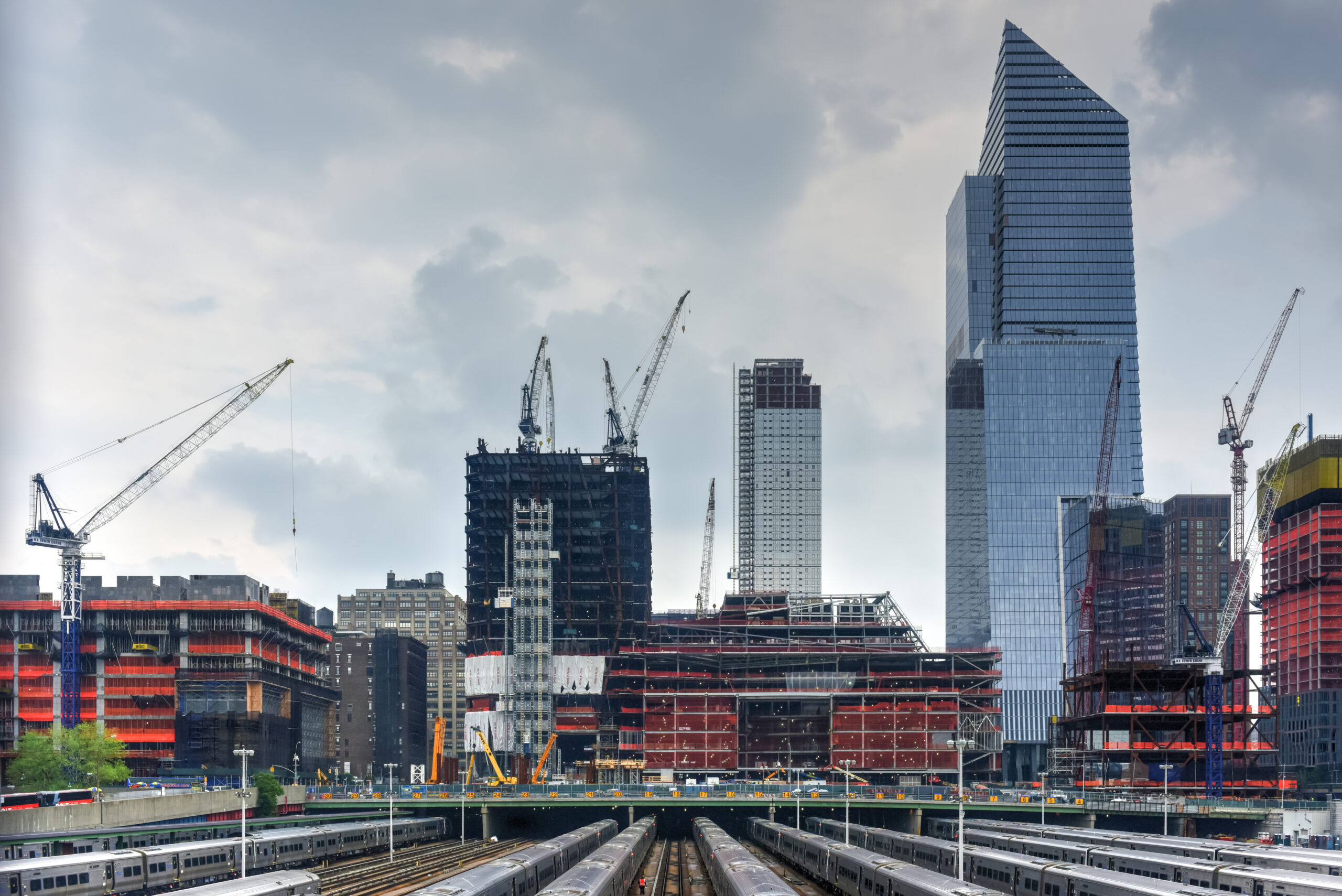
How $100B in Lost Productivity, Outdated Delivery Models, and a Growing Labor Shortage Are Holding the U.S. Back — and Why Design-Build, IPD, and Human-Centric Leadership Are the Path Forward
You ever walk into a project meeting and feel the tension before anyone speaks?
The schedule is shrinking.
The team looks stretched.
RFIs keep showing up like a storm you can’t quite outrun.
And under all of that, there’s the same quiet truth:
“We’re good at what we do… so why does it still feel like the project is working against us?”
I’ve sat with leaders across the AEC ecosystem, superintendents, designers, owners, trade partners, and local/regional officials, and the story rarely changes. These aren’t bad teams. They’re strong teams trapped in a system built for a different era.
When you zoom out, the bigger picture becomes impossible to ignore:
Construction inefficiency is draining $70–100 billion from the U.S. economy every single year. And it’s happening because of how we deliver work, not because of a lack of effort.
This isn’t just a construction issue.
It’s a human issue.
A community issue.
A state competitiveness issue.
And increasingly, a national security issue.
The encouraging part?
We can fix this.
We just have to rethink the way we build, collaborate, and lead.
Let’s explore what that looks like.
The Construction Labor Shortage Is Really a Capacity Crisis
We’ve all heard the numbers:
- The industry needs 439,000 workers in 2025 just to keep pace (ABC).
- Long-term demand pushes that number to 723,000 per year (NAHB/HBI).
However, the real story isn’t the shortage, it’s the economic value we lose because of it.
Each missing worker could represent about $120,000 in annual productive output.
Multiply that by half a million missing workers and the nation loses:
≈ $60 billion every year.
Teams feel this loss every day:
- delayed projects
- rising costs
- extended schedules
- exhausted crews
- fewer qualified bidders
- higher turnover
The labor shortage doesn’t just slow projects.
It shrinks the nation’s total construction capacity.
And no matter how hard people work, effort alone can’t close a structural capacity gap.
Productivity Decline Slows Every Project, and Every State’s Growth
Construction labor productivity has fallen 30% since 1970 (McKinsey).
Let’s put that into perspective:
Most industries doubled productivity.
Construction moved backward.
You can see that decline in:
- late design decisions
- incomplete coordination
- siloed workflows
- slow approvals
- heavy rework
- inconsistent VDC involvement
- adversarial procurement structures
This isn’t a talent problem.
It’s a system problem.
And our current delivery models can’t keep up with the speed and complexity of today’s needs.
Inefficiency Isn’t Technical: It’s Human, and That Makes It Fixable
Construction Dive reported that $30–40 billion disappears annually due to inefficiencies, waste, and poor planning (source).
But inefficiency doesn’t show up as a line item.
It shows up as:
- confusion
- rework
- friction
- silence
- misalignment
- frustration
- burnout
Behind every schedule delay sits a human moment:
- Psychological safety slipped, so the question never surfaced.
- A misalignment lingered because the conflict felt risky to name.
- A key insight was missing because a crucial voice wasn’t invited early.
- People felt pressure when they needed clarity.
This is why the idea of “fixing construction with technology” never holds up on its own.
Tools don’t create alignment.
People do.
And when people work in models that support collaboration, inefficiency collapses.
The Downstream Impact Hits Families, Communities, and States
This is where the $100B problem becomes real.
Housing becomes less affordable
The U.S. is short 3.8 million homes.
Construction inefficiency pushes this gap wider.
That shows up as:
- higher rents
- rising home prices
- limited workforce housing
- longer commutes
- talent flight
Communities feel the pressure long before policy teams do.
Healthcare feels the strain
When facilities open late, communities experience:
- longer ER waits
- less access to care
- clinician burnout
- delayed specialty services
One project delay becomes a multi-year community impact.
Infrastructure slows down
Aging roads, water systems, and transit corridors linger on the backlog because we can’t build fast enough.
This slows:
- freight
- logistics
- economic growth
- regional competitiveness
Manufacturing weakens
If states can’t deliver:
- semiconductor plants
- EV battery facilities
- clean energy infrastructure
- advanced manufacturing
…companies go elsewhere.
National security becomes vulnerable
Slow construction delays:
- defense facilities
- cyber infrastructure
- emergency operations centers
- domestic chip fabrication
- energy grid modernization
This is more than inefficiency.
It’s a vulnerability.
States That Modernize Delivery Will Lead the Next Decade
Most states still operate under procurement models designed decades ago.
But Design-Build (Progressive Design-Build), CMAR, and Integrated Project Delivery (IPD) aren’t “alternatives” anymore, they’re essential tools for state-level competitiveness.
States that adopt integrated delivery models:
- build housing faster
- deploy infrastructure sooner
- reduce taxpayer cost
- attract manufacturing
- accelerate economic growth
- improve project certainty
Companies choose states that can deliver capacity quickly.
If a state can shave months off delivery, it wins major investments.
If it can’t, capital leaves.
Delivery models aren’t just contracts.
They’re economic engines.
Why Design-Build and IPD Are the Most Human Delivery Models We Have
This matters deeply, because I’ve watched teams shift almost instantly under Design-Build and IPD.
These models reflect how humans naturally work best:
- collaboratively
- early
- openly
- with aligned incentives
- in shared spaces
- with clarity
- with trust
Design-Build (especially Progressive DB):
- pulls teams together earlier
- reduces handoff friction
- brings VDC into conceptual design
- accelerates clarity
- increases predictability
- smooths design coordination
- enables prefab and modular earlier
Momentum matters, and DB creates momentum.
IPD (Integrated Project Delivery)
IPD takes collaboration deeper with:
- shared risk
- shared reward
- shared governance
- transparent financials
- co-location or digital colocation
- continuous BIM/VDC integration
- lean workflows
You can feel the shift immediately:
- People speak more openly.
- Decisions happen faster.
- Teams trust each other sooner.
- Rework drops.
- Problems surface earlier.
Design-Build creates alignment.
IPD creates shared risk with common goal.
Together, they form the most human-centered, high-performance delivery ecosystem we have.
Human-Centric Leadership Is the Real Unlock
This is where your work with leaders in AEC becomes essential.
Because delivery models set the structure, but leadership sets the tone.
Your Five Cs of Change make that shift possible:
- Choice → leaders choose collaboration early
- Control → alignment creates control, not micromanagement
- Clarity → clarity reduces stress and accelerates decisions
- Commitment → teams commit when they help shape the plan
- Curiosity → curiosity reveals solutions that rules can’t
When leaders operate from these principles, projects move with more flow, less friction, and more trust.
Human-centric leadership makes integrated delivery work.
Where We Go From Here: The First Steps Are Small on Purpose
Transformation doesn’t start with a massive change initiative.
It starts with small shifts:
- Bring your design and construction teams together earlier.
- Invite specialty trades into predesign (Design Assist).
- Ask VDC to support conceptual planning.
- Run a prefab or modular pilot.
- Try one progressive alignment workshop.
- Ask your team: “Where do we need more clarity?”
- Create space for honesty in kickoff meetings.
Small steps shift culture.
Culture shifts capability.
Capability shifts performance, for companies and for states.
One project becomes proof.
Proof becomes confidence.
Confidence becomes practice.
Practice becomes identity.
And identity becomes competitive advantage.
Final Thought
The $100B drag is not a fixed cost.
It’s a function of choices we made long ago.
Now we get to choose again.
Start by choosing delivery models that let people actually collaborate.
Bring clarity into conversations that used to spiral into chaos.
Stay curious, especially when the impulse is to lock onto certainty.
Try integrated delivery instead of fighting fragmentation.
We can choose a future where states build faster, teams work healthier, and communities benefit sooner.
The future belongs to those who build differently.
And that future starts right now.
Sources
- ABC – Construction Industry Must Attract 439,000 Workers in 2025
https://www.abc.org/News-Media/News-Releases/abc-construction-industry-must-attract-439000-workers-in-2025? - NAHB/HBI – Industry Must Hire 723,000 Workers Annually
https://www.nahb.org/blog/2024/06/hbi-spring-24-labor-report - McKinsey – Construction Productivity Is No Longer Optional
https://www.mckinsey.com/capabilities/operations/our-insights/delivering-on-construction-productivity-is-no-longer-optional? - Construction Dive – Industry Wastes $30–40B in Labor Inefficiencies
https://www.constructiondive.com/news/construction-wastes-billions-labor-lean-planning/696421/? - DBIA/FMI – Design-Build Utilization Research
https://dbia.org/research/? - ResearchGate – Evaluating IPD in Change Management
https://www.researchgate.net/publication/387828404_Evaluating_the_Role_of_Integrated_Project_Delivery_IPD_in_Facilitating_Change_Management_in_Construction_Projects? - Emerald – Human-Centric Change Management for BIM
https://www.emerald.com/ecam/article/doi/10.1108/ECAM-02-2025-0312/1278451/Human-centric-integrated-change-management?




